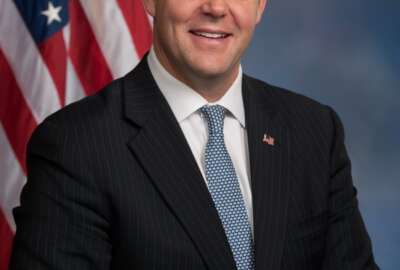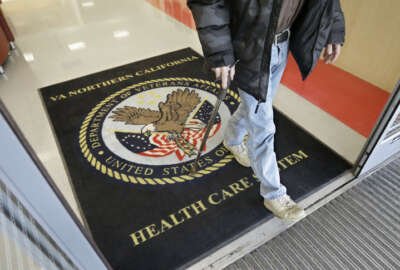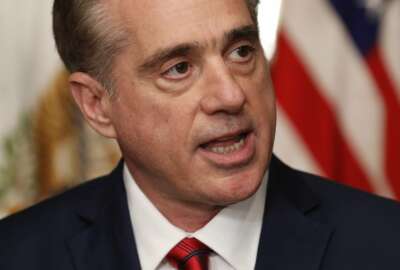
Why some lawmakers are making recruitment calls to get new talent into the VA
The Veterans Affairs Department, Congress and Government Accountability Office all agree: an outdated and inflexible hiring process and serious shortcomings with...
Lawmakers say they’re tired of having to call the Veterans Affairs Department to inform VA staff of qualified medical professionals who have applied and want to work for the agency but haven’t heard from a hiring manager in months.
“It’s telling that you have members of Congress who are making recruitment phone calls to get people hired,” Rep. Beto O’Rourke said during a March 22 hearing before the House VA Health Subcommittee.
In some cases, it takes VA three months to a year to onboard a new health care professional, the Government Accountability Office said.
The subcommittee’s chairman, Rep. Brad Wenstrup (R-Ohio), said he’s had the same experience.
“I’ve had doctors that I know for years who call me and say, ‘We’re waiting, waiting, waiting. I want to go work at the VA.’ So we have work to do,” he said.
Congress, GAO and VA itself all agreed those stories are a product of an outdated and inflexible hiring process and serious shortcomings with the department’s human resources functions.
They all also agreed —along with the 412 members of the House who unanimously voted for it — that a new piece of legislation could solve some, but not all, of VA’s recruiting and hiring challenges.
The bill, which Wenstrup introduced earlier this month, would set up an executive management fellowship program. It would establish an exchange program of sorts for Veterans Health Administration and Veterans Benefits Administration employees to gain training and experience with the private sector, and vice versa.
The legislation also requires the VA secretary to conduct annual performance plans for the department’s political appointees in a similar manner to career employees. Specifically, political appointees would receive ratings based on their ability to recruit, hire and retain new employees and keep them engaged, trained and motivated.
VA has spoken often about its 45,000 vacant health positions. Former leadership brought up that number about a year ago, and it appears the total hasn’t significantly changed since then.
Attrition among five clinical positions with key staffing shortages at the Veterans Health Administration has increased every year in recent years, from roughly 5,900 employees in fiscal 2011 to 7,700 employees in fiscal 2015, said Robert Goldenkoff, director of strategic issues at GAO.
Most employees who left those positions — which include nurses, physicians, physician assistants, psychologists and physical therapists — voluntarily chose to resign.
But VHA doesn’t have enough human resources personnel to move qualified job candidates through the hiring process quickly enough, Goldenkoff said.
The department said it needs about one human resources professional for every 60 employees to best provide HR services. But most VHA medical centers are falling short of that goal. About 116 of 139 VA medical centers fell short of that target in fiscal 2015, Goldenkoff said. Half of those 116 centers have one HR professional serving 80 or more VA employees.
And some of those HR professionals are leaving VA to go to other agencies, said Steve Young, deputy undersecretary for health for operations and management at VHA.
“Candidly, the job is easier,” he said. “In VA, we have three HR systems: Title 5, Title 38 [and] Title 38-hybrid. It makes the HR professionals’ jobs very complex, and frankly, the jobs can be easier elsewhere.”
GAO said the problem starts at the top.
“We found that central HR offices at VA and VHA have inadequate oversight of medical center HR offices, thus limiting VA’s ability to hold the local offices accountable for improving hiring processes, training HR staff and implementing consistent classification processes,” Goldenkoff said.
VA said it wasn’t sure whether its recruitment goals are built in to its hiring managers’ performance plans.
“It’s very telling that you don’t have an answer to that,” O’Rourke said.
The department has implemented some recent changes to make the hiring process easier and faster, Young said.
For example, VHA now issues national announcements that describe all of the open medical center director positions at once. In the past, the department issued an individual announcement for each open position.
“We might get great candidates interested in one location but if they didn’t apply to the other location, we couldn’t consider them for that,” said Paula Molloy, assistant deputy undersecretary for health for workforce services at VHA. “There are a number of HR hiring rules under the regulations from OPM, that’s just one example, where there’s opportunities to make those processes easier and more commonsense.”
Yet VA said it’s frustrated by governmentwide requirements that make the hiring and onboarding process for health care executives too long and cumbersome, Young said.
There are some changes the department itself could make on its own, but there are others that the Office of Personnel Management would need to address, and in fact already has through past efforts to simplify the Senior Executive Service onboarding and Qualifications Review Board process.
Max Stier, president and CEO of the Partnership for Public Service, argued that those flexibilities and new ideas could apply across government.
“The talent issues that VA is facing are not unique to VA,” he said. “In fact, the changes that are discussed here ought to be taking place across the entire government and then some.”
Wenstrup’s bill passed the House unanimously last week. It now sits in the Senate.
Copyright © 2025 Federal News Network. All rights reserved. This website is not intended for users located within the European Economic Area.
Nicole Ogrysko is a reporter for Federal News Network focusing on the federal workforce and federal pay and benefits.
Follow @nogryskoWFED





